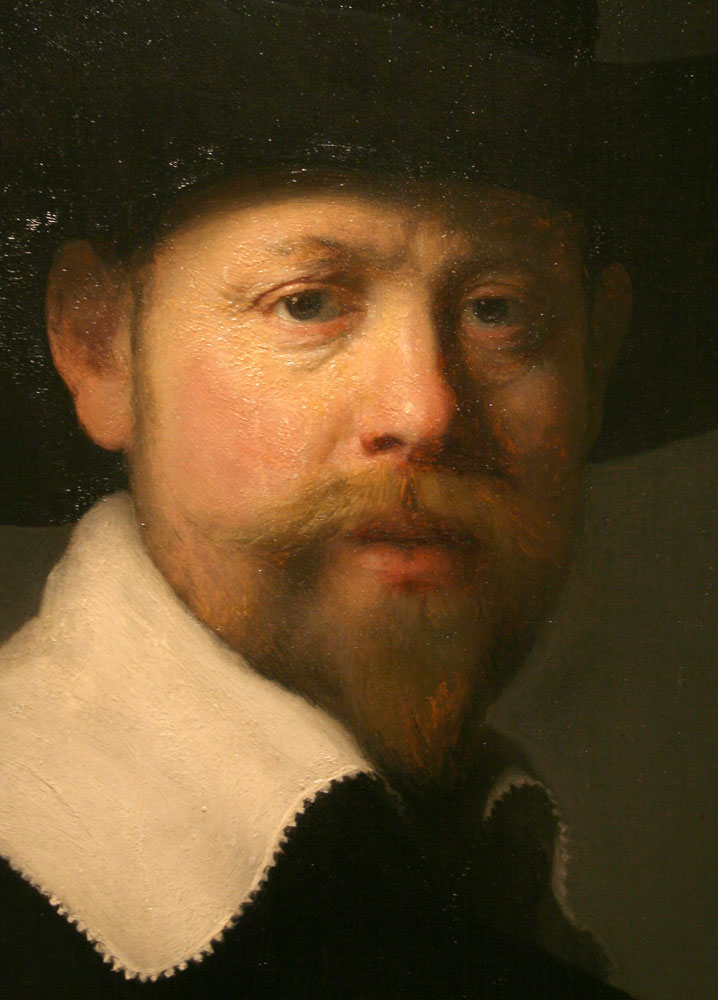However, you think of color, it's important to remember

As you may know, I’ve been making my own linen panels for several years. (Click here to learn how.) But you might not be aware that I paint almost exclusively on panels. Here are eight reasons why.
6. Durability. Stretched canvas can be punctured fairly easily. I’ve done repair work on a few paintings (not mine) with holes in them that clients have brought to my gallery. (After one client had propped a painting against a wall, his large dog knocked it over and stepped through the canvas with his paw. Oops!) Canvas mounted on a panel can also be damaged, but I think needed repairs would be much more minor. And if Miracle Muck® glue was used when mounting, the canvas can be removed from a damaged panel and mounted onto another panel. (Miracle Muck® is heat activated.)
7. Easier cropping. A canvas panel can be cropped more easily than a stretched canvas.
8. Easier storage. Canvas panels take up less space than stretched canvases.
1. No loosening. Stretched canvas can become loose and require re-stretching. I’ve had this issue in the past when shipping paintings to a location with a different climate than mine — from Colorado to Florida. In fact, the artist I spoke with at the show had to tighten the stretched canvas on his show painting when he arrived at the event. Alternatively, canvas properly glued to a panel should not become loose.
2. Less mounting difficulty. Stretched canvas can be difficult to mount squarely on the stretcher bars. And it takes some muscle to stretch it tightly. Canvas panels are easier to make and are square as long as the panel is cut squarely.
3. No stretcher bars needed. Stretching canvas requires a supply of stretcher bars in the various lengths needed. Also, supporting crossbars are necessary for large canvases. Canvas panels require only canvas and panels large enough to make the needed sizes, plus glue.
4. Less surface movement. The surface of stretched canvas can move with vibrations and changes in temperature. This can disturb the layers of paint over time and cause the paint to crack. The surface of a canvas panel is much more stable. For example, the pictured painting (detail) by Rembrandt in the LACMA collection was painted on a wood panel in 1632. The surface still looks brand new. Click here to see more close-ups of the painting.
5. Portability. Canvas panels are more easily portable for plein air painting. Plus, light can’t shine through them from behind during an outdoor painting session as can happen with stretched canvas.
6. Durability. Stretched canvas can be punctured fairly easily. I’ve done repair work on a few paintings (not mine) with holes in them that clients have brought to my gallery. (After one client had propped a painting against a wall, his large dog knocked it over and stepped through the canvas with his paw. Oops!) Canvas mounted on a panel can also be damaged, but I think needed repairs would be much more minor. And if Miracle Muck® glue was used when mounting, the canvas can be removed from a damaged panel and mounted onto another panel. (Miracle Muck® is heat activated.)
7. Easier cropping. A canvas panel can be cropped more easily than a stretched canvas.
8. Easier storage. Canvas panels take up less space than stretched canvases.
Back to the conversation with my fellow artist. He agreed with my points in favor of using panels. But he tends to use both types of supports for his work. Panels for smaller pieces painted outdoors and stretched canvases for larger studio paintings. By the end of our discussion, we also agreed on a few points in favor of stretched canvas.
1. Spring-like feel. Stretched canvas has a spring to it that a panel lacks. One can feel the slight spring action of a stretched canvas against the brush.
2. Larger sizes. For extremely large paintings, a large enough panel may not be available. I know Gatorfoam® panels and other similar products are available up to 60″ x 120.” I haven’t looked for sizes larger than that.
3. Shipping unmounted. Unmounted paintings can be rolled up for shipping or storage and later stretched onto stretcher bars. This could be a big advantage and money saver when shipping large paintings overseas.
Write your awesome label here.
